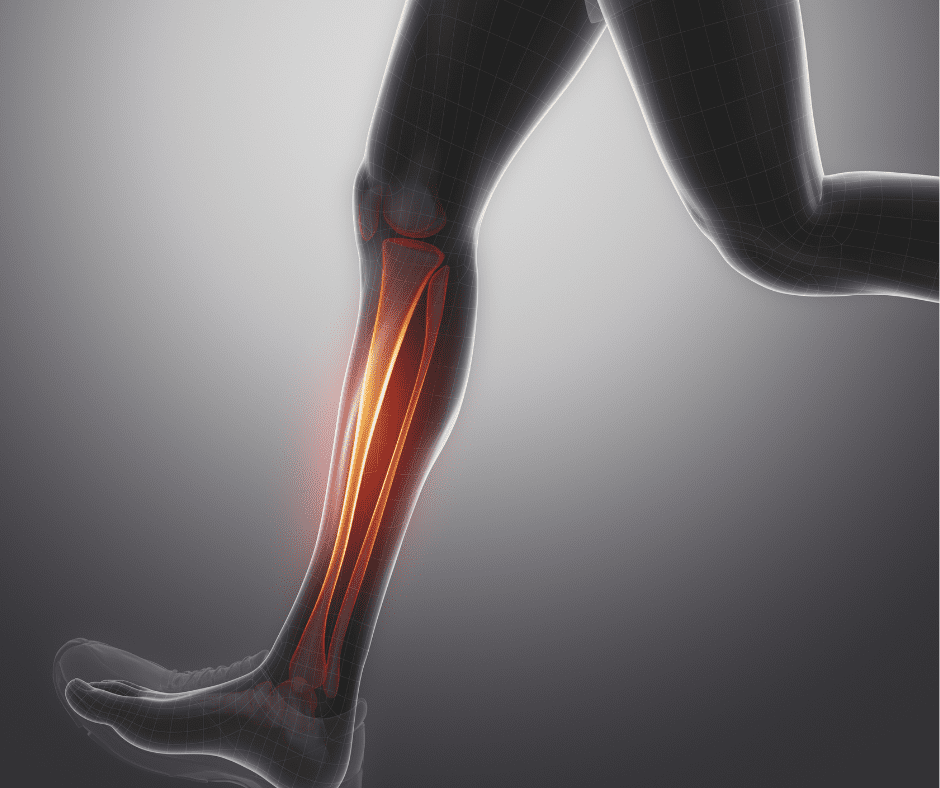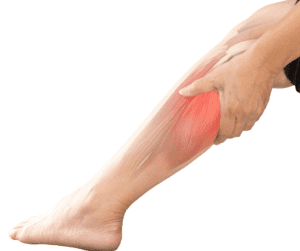If you’ve had a Fibula stress fracture before you know that it’s a pain in the calf area that gets better with rest but worse when you run…
Your Fibula is a bone that is non-weight bearing and stabilizes and supports your ankle in particular which in turn plays a role in supporting the lower and upper limbs through the platform provided for the attachment of tendons and ligaments and therefore, plays an important role in running.
A stress fracture of the fibula is an incomplete fracture or very small crack within the smaller of the two lower leg bones that run alongside your shin bone.
Let’s have a look at how serious a Fibula stress fracture is, the causes, and the length of the healing period…

Is a Fibula Stress Fracture Serious?
A Fibula stress fracture is considered a low-risk injury but if you continue to run with this injury you could weaken the bone further and delay healing.
This can potentially lead to a longer recovery period and the worst-case scenario completely fractures your fibula.
How Long Does It Take For a Fibula Stress Fracture To Heal?
It usually takes six to seven weeks for a fibula stress fracture to heal.
Although the recovery time does depend on some factors such as…
- Age
- The severity of the injury as well as other injuries present
- The amount of time you spend doing physical therapy
- Underlying health conditions
What Causes a Fibula Stress Fracture
The cause of a stress fracture is overload, and for different people, that means different things. Females are more susceptible to stress fractures than males.
If you repeatedly get them, then my advice would be to consult with a medical practitioner – a specialist – because you’d need to look at bone density, this is more prevalent in females with hormonal imbalances and can also be related to nutrition in males and females.
Good bone health implies good bone mineral density. Our bones support us and allow us to move. Our bones also store minerals such as calcium and phosphorous, which help keep our bones strong, and release them into the body when we need them for other uses.
There are many things we can do to keep our bones healthy and strong…
We know that a moderate level of physical activity may prevent fractures; and even if it does not attenuate bone loss, it can decrease the fracture risk.
Something everyone needs to know is that we will always lose bone…
Click here to look at how we can preserve bone mass as we get older by taking advantage of the benefits we gain through physical activity.
So… How can you tell if you have a fibula stress fracture?
Symptoms Of a Fibula Stress Fracture

Symptoms of a fibula stress fracture consist of pain in your calf area, this pain will usually develop gradually, over time.
Fibula stress fractures occur when there is too much load placed through the bone. The force causes the bone to swell which leads to small cracks.
A common symptom of a fibula stress fracture is that the pain gets worse when you run or walk but improves with rest. In later stages, you can feel pain all the time, including at night.
Now that you know the symptoms, let’s have a look at when and how you can start running once healed…
How To Start Running After a Fibula Stress Fracture Safely
The site where the fibula stress fracture occurs (If you have allowed it to heal properly), is highly unlikely to fracture again because your body remodels the bone.
It also produces more bone than necessary. However, that does not mean that the area surrounding where the fibula stress fracture occurred is not susceptible to future stress fractures.
You need to start running SLOWLY after your fibula stress fracture.
Typically a fibula stress fracture would be at least 12 weeks of no running.
Sometimes you can do some aqua jogging or maybe run on an anti-gravity treadmill a bit earlier than that.
I always tell people to start running again at a minimum of 12 weeks and depending on the doctors we are working with we may introduce running sooner.
The name of the game is to build up as slowly as you can.
You need to start off with a run-walk strategy and when we say slow we mean LITERALLY as slow as patience will allow you.
I would build up from running 10 to 15 minutes up to running 30 – 40 minutes at a time over 4-6 weeks.
Take almost as long as you rested to get back to running at pre-injury volumes, and then from there, you can introduce higher intensity work, and I strongly recommend that you get into a gym and do some strength work.
We recommend using a healthcare professional through this process so that you can identify the imbalances and biomechanics that are predisposing you to future-related injuries.
Anything that is causing any additional rotational stress in the lower limb needs to be corrected. If we can correct those imbalances that will also go a long way to ensure that you don’t get a fibula stress fracture or similar injury again.
How To Tell If Your Fibula Stress Fracture Is Healed
If you can walk properly without pain—which indicates the bone has healed completely— and you get clearance from your treating physician you can likely return GRADUALLY to running. In the absence of medical clearance, we strongly recommend waiting 12 weeks from injury onset.
Chatting with your doctor is definitely advisable as they can also show you modified exercises and techniques designed to reduce the impact physical activity has on the injured bone.
How To Prevent a Fibula Stress Fracture
The number one cause of fibula stress fractures is overtraining…
To prevent a fibula stress fracture from occurring, you should have a look at your training program to see if you are doing too much and/or increasing your training load too soon.
Training in the wrong shoes also places you at a higher risk of getting a fibula stress fracture.
After you’ve been running in your shoes for quite a while, they’ll start to show signs of wear and tear.
When To Change Your Running Shoes – The Mileage Guide
These will be things like poor shock absorption, and worn tread, they’ll feel flat and you might experience pain while running.
If you start to notice these signs of wear, it’s time to start looking for a new pair of running shoes.
As a general rule of thumb, if you start to feel pain in any of your bones… stop the activity you are doing and get it checked out.
A little extra rest at the right time with a change in your training plan may be the difference between a long or a short rest period from running.



Comments are closed.